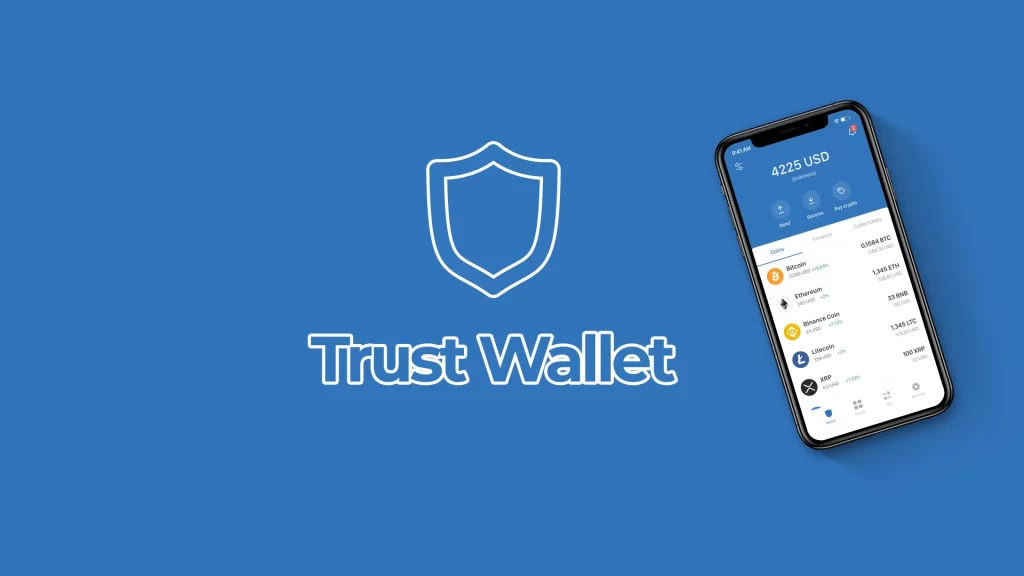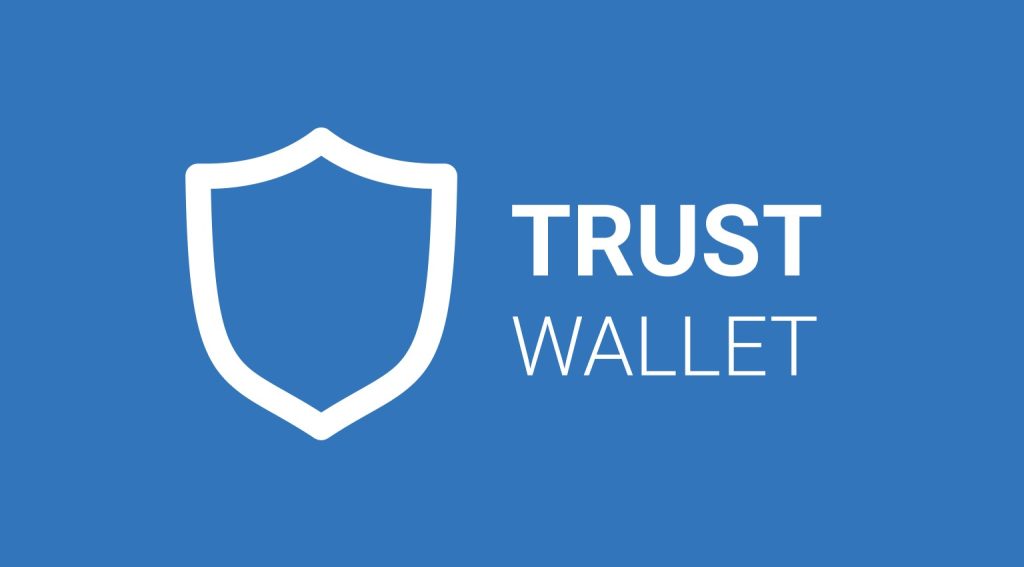
Trust Wallet is highly secure, featuring local private key storage, encryption, and biometric authentication options.
Security Features
Encryption and Private Keys
Trust Wallet employs advanced security measures to protect users’ assets:
- Private Key Storage: Trust Wallet stores private keys locally on the user’s device, ensuring that only the user has control over their funds. This method prevents centralized breaches since the keys are not stored on Trust Wallet’s servers.
- Advanced Encryption: The app uses industry-standard encryption protocols to secure private keys and sensitive data. This ensures that even if a device is compromised, the private keys remain protected.
- Backup and Recovery: Upon wallet creation, Trust Wallet provides a 12-word recovery phrase. This phrase is essential for recovering the wallet if the device is lost or damaged. Users are advised to store this phrase securely and offline to prevent unauthorized access.
Two-Factor Authentication
Trust Wallet enhances security with two-factor authentication (2FA):
- Extra Security Layer: 2FA requires users to provide two forms of identification before accessing their wallet. This usually includes something they know (like a password) and something they have (like a mobile device).
- Biometric Authentication: Trust Wallet supports biometric security measures, such as fingerprint and facial recognition. These features add a layer of security by ensuring that only the device owner can access the wallet.
- Code Verification: For additional security, users can enable code verification through authentication apps like Google Authenticator or Authy. This step involves entering a time-sensitive code generated by the authentication app to access the wallet.

User Control of Funds
Local Storage of Private Keys
Trust Wallet emphasizes user control by implementing local storage of private keys:
- Complete Ownership: Users have full ownership of their private keys, which are stored locally on their devices. This means only the user has access to their cryptocurrency assets.
- Enhanced Security: By keeping private keys on the user’s device, Trust Wallet minimizes the risk of centralized hacks. Unlike some other wallets, Trust Wallet does not store or have access to your private keys.
- No Third-Party Access: Since the keys are stored locally, no third parties, including Trust Wallet, can access your funds. This decentralization enhances the security and privacy of your assets.
Backup and Recovery Options
Trust Wallet provides robust backup and recovery options to ensure users can always regain access to their funds:
- Recovery Phrase: When you create a new wallet, Trust Wallet generates a 12-word recovery phrase. This phrase is the only way to restore access to your wallet and should be stored securely and offline.
- Easy Recovery: If your device is lost, stolen, or damaged, you can easily restore your wallet by entering the recovery phrase on a new device. This process ensures you can quickly regain control of your funds.
- Security Recommendations: Trust Wallet advises users to write down the recovery phrase and store it in multiple secure locations. Avoid storing the phrase digitally to protect it from online threats such as hacking and phishing.
Protection Against Hacks
Security Audits
Trust Wallet employs rigorous security audits to ensure the integrity and safety of its application:
- Regular Audits: Trust Wallet undergoes regular security audits conducted by third-party cybersecurity firms. These audits assess the wallet’s code and infrastructure for vulnerabilities and provide recommendations for improvement.
- Comprehensive Testing: The auditing process involves comprehensive testing of the wallet’s features and security protocols, ensuring that all potential weaknesses are identified and addressed.
- Transparency: Trust Wallet shares audit results and updates with the community, maintaining transparency and trust. This openness helps users stay informed about the security measures in place.
Open Source Code
Trust Wallet’s commitment to transparency is further demonstrated by its open-source code:
- Public Repository: The source code for Trust Wallet is available on public repositories like GitHub. This allows anyone to review, inspect, and verify the code for security and functionality.
- Community Contributions: Open-source code enables developers from around the world to contribute to Trust Wallet. This collaborative approach helps in identifying and fixing bugs, improving features, and enhancing overall security.
- Transparency and Trust: By making the code publicly accessible, Trust Wallet builds trust within the cryptocurrency community. Users can be confident that there are no hidden vulnerabilities or backdoors in the wallet’s code.
- Continuous Improvement: The open-source nature of Trust Wallet fosters continuous improvement and innovation, as developers and security experts can suggest and implement enhancements.

Response to Threats
Regular Updates
Trust Wallet actively responds to emerging threats by maintaining a rigorous update schedule:
- Frequent Updates: The development team regularly releases updates to address security vulnerabilities, enhance functionality, and improve user experience.
- Patch Management: Updates often include patches for recently discovered security flaws, ensuring that users are protected against the latest threats.
- User Notifications: Trust Wallet informs users about important updates and encourages them to install the latest version to benefit from enhanced security measures.
- Performance Improvements: Alongside security fixes, updates also optimize the app’s performance, making it more efficient and reliable for everyday use.
Bug Bounty Programs
Trust Wallet leverages the expertise of the global security community through bug bounty programs:
- Incentivizing Security Researchers: By offering financial rewards, Trust Wallet encourages independent security researchers to identify and report vulnerabilities.
- Community Engagement: Bug bounty programs engage the cybersecurity community, fostering collaboration and proactive security measures.
- Prompt Vulnerability Reporting: Security flaws reported through the bug bounty program are prioritized and addressed promptly, minimizing the risk of exploitation.
- Transparency in Patching: Trust Wallet transparently communicates about the vulnerabilities found and the fixes implemented, maintaining user trust and confidence in the wallet’s security.

Comparison with Other Wallets
Trust Wallet vs. MetaMask
Trust Wallet:
- User Interface: User-friendly and mobile-focused.
- Supported Cryptocurrencies: Wide range, including ERC-20, BEP-2, and BEP-20 tokens.
- Staking and DApps: Integrated staking and DApp browser.
- Security: Local storage of private keys with encryption and biometric options.
MetaMask:
- User Interface: Simple, ideal for Ethereum and ERC-20 tokens.
- Supported Cryptocurrencies: Primarily Ethereum-based, supports custom networks.
- Browser and Mobile: Available as a browser extension and mobile app.
- DApp Integration: Excellent for Ethereum-based DApps.
- Security: Local key storage, supports hardware wallets.
Trust Wallet vs. Coinbase Wallet
Trust Wallet:
- User Interface: Intuitive and easy to use.
- Supported Cryptocurrencies: Extensive support, including ERC-20, BEP-2, and BEP-20.
- Decentralized: Full user control over private keys.
- Staking and DApps: Offers staking and DApp browser.
- Security: Strong encryption, local key storage, biometric authentication.
Coinbase Wallet:
- User Interface: Clean, integrates with Coinbase exchange.
- Supported Cryptocurrencies: Wide range, aligned with Coinbase offerings.
- Exchange Integration: Seamless trading with Coinbase.
- DApp Browser: Access to decentralized applications.
- Security: Local key storage, Coinbase ecosystem security.

Common Security Concerns
Phishing Attacks
Phishing attacks are a significant threat to cryptocurrency wallets. Here’s how to recognize and avoid them:
- Suspicious Emails and Links: Be wary of emails or messages that ask for your private keys, recovery phrases, or personal information. Trust Wallet will never request this information.
- Official Sources: Always access Trust Wallet through official sources. Bookmark the official website and only download the app from the official Google Play Store or Apple App Store.
- Double-Check URLs: Before entering any sensitive information, double-check the URL to ensure it is legitimate and not a spoofed site designed to steal your data.
- Email Authenticity: Verify the sender’s email address and look for signs of phishing, such as poor grammar, urgent language, or unfamiliar links.
Fake Apps
Fake apps pose another common security concern. Follow these steps to ensure you are using the genuine Trust Wallet app:
- Official Downloads: Only download Trust Wallet from the official website, Google Play Store, or Apple App Store. Avoid third-party websites.
- Check Developer Information: Verify that the app is developed by “DApps Platform Inc.” on Google Play Store or “Six Days LLC” on the Apple App Store.
- App Reviews and Ratings: Read user reviews and check the app’s rating. Fake apps often have poor reviews and low ratings.
- Stay Updated: Regularly update the Trust Wallet app to the latest version, which includes security patches and new features.

User Best Practices
Keeping Recovery Phrases Secure
Your recovery phrase is the key to accessing your Trust Wallet. Follow these best practices to keep it secure:
- Write It Down: Write your recovery phrase on paper rather than storing it digitally to prevent it from being hacked or accessed remotely.
- Multiple Copies: Create multiple copies of the written recovery phrase and store them in different secure locations, such as a safe or a safety deposit box.
- Avoid Digital Storage: Do not store your recovery phrase in digital form (e.g., on your computer, phone, or cloud storage), as these can be vulnerable to hacking.
- Never Share: Never share your recovery phrase with anyone. Trust Wallet or any legitimate service will never ask for your recovery phrase.
Regularly Updating the App
Keeping your Trust Wallet app up-to-date is crucial for maintaining security and accessing the latest features:
- Enable Auto-Updates: Enable automatic updates on your device to ensure you always have the latest version of Trust Wallet.
- Check for Updates: Regularly check the Google Play Store or Apple App Store for updates if you prefer manual updates.
- Read Update Notes: Pay attention to update notes provided with new versions, as they often include important security patches and feature enhancements.
- Uninstall Old Versions: If you have multiple versions of the Trust Wallet app installed, uninstall older versions to avoid potential security risks.